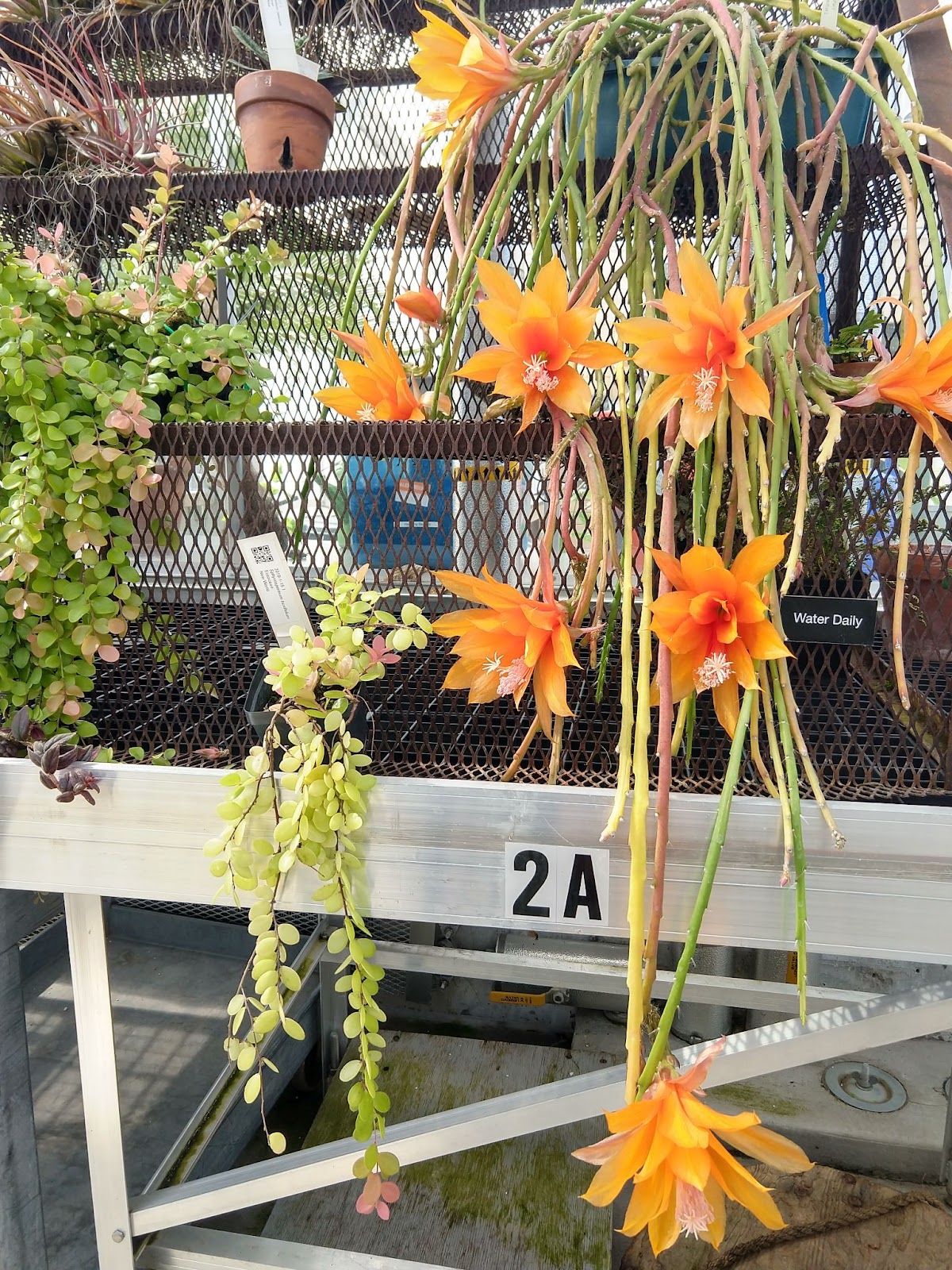I returned to the greenhouse after having been away for almost 8 weeks (spent in Palm Springs). The day before, Wednesday, I sent Curator J... an email to give him warning I would be arriving, and to give him the opportunity to cancel my arrival if the conditions at the greenhouse prevented my working there at this time - I have been concerned since A... is still on medical leave that Curator has too much on his plate to shepherd volunteers through the morning. But, he replied to my email indicating that volunteers are welcome.
Curator had a list of plants on the “vine bench” for me to prune and move, this bench is located in the middle of room C3. B also had a few ideas for pruning a viney bush-like plant attached to the metal trellis in room 3 on the wall separating it from room C2.
I spent the majority of the time working on the vine bench in C2. I repotted two of the plants which had become root-bound and top-heavy. One of the vines had become so entwined in its tomato-cage that I had to use heavy metal shears to cut the cage apart. I prefer to build tripod teepees rather than use tomato cages for this reason. Teepees are easy to take apart or adjust without damaging the plant.
Since the spring has arrived, many of the plants are in full bloom. One cactus in particular, Disocacuts aurantiacus, has abundant bright orange blossoms on dangling, prostrate cactus stems (see google photos for this date)

Curator had a list of plants on the “vine bench” for me to prune and move, this bench is located in the middle of room C3. B also had a few ideas for pruning a viney bush-like plant attached to the metal trellis in room 3 on the wall separating it from room C2.
I spent the majority of the time working on the vine bench in C2. I repotted two of the plants which had become root-bound and top-heavy. One of the vines had become so entwined in its tomato-cage that I had to use heavy metal shears to cut the cage apart. I prefer to build tripod teepees rather than use tomato cages for this reason. Teepees are easy to take apart or adjust without damaging the plant.
Since the spring has arrived, many of the plants are in full bloom. One cactus in particular, Disocacuts aurantiacus, has abundant bright orange blossoms on dangling, prostrate cactus stems (see google photos for this date)
Curator J asked if I wanted an ID badge. I said yes, it would be helpful to get in and out of the various greenhouse rooms since the doors are self-locking when they close. A valid ID badge is required to unlock the doors to the Collection, Display, and Staff rooms. This week I’ll arrange to register as a student at the U of M in order to get an ID badge. Ugh, I imagine I’ll have to submit a photo for the badge.
Comments
Post a Comment